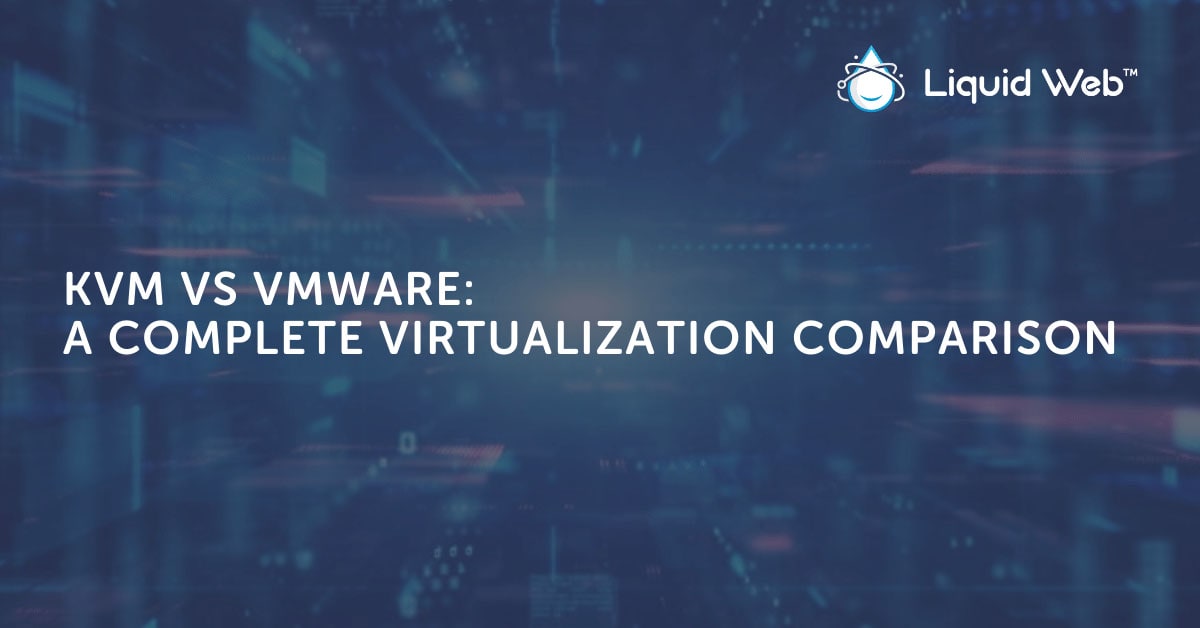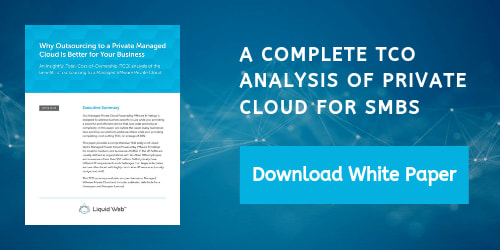
What is KVM?
KVM is a kernel-based virtual machine or Type 1 Hypervisor built into Linux. A hypervisor is what runs your virtual machines.
In many cases, the hypervisor has to be installed to be used. KVM’s tight integration into Linux and the Linux package manager makes it a very popular choice for those using hypervisors. This full integration with Linux also makes it quite simple and quite stable.
Although KVM has full-blown Linux running in the background, which uses additional server resources, KVM running in the kernel does help eliminate some of the overhead.
What is VMware vSphere?
VMware ESXi runs all of your virtual machines on a single host. For those comparing Linux KVM vs VMware, ESXi is also a Type 1 Hypervisor.
The ESXi bare metal hypervisor is built to be very efficient and use little resources, which leaves more resources for your virtual machines. VMware vSphere controls multiple ESXi hosts from a single interface.
When comparing KVM vs vSphere, you’ll see that KVM is really more appropriate to compare vs VMware ESXi. KVM doesn’t really have an interface like vSphere, which is why Liquid Web provides a simple management interface at no cost to customers.
vSphere and ESXi are the top tools in the field of virtualization. If you’re looking for enterprise-level virtualization with features such as high availability and zero-downtime migrations, VMware is what you want.

Use Cases for KVM
Basic High Availability
High availability means if your server goes down or becomes unavailable, it will switch to your backup server and still run. This equates to little or no downtime for your application or website.
If you want this for your virtual machine, HA KVM will work nicely. If you want more advanced virtualization features for your HA setup, you might need to upgrade to a more advanced product.
Server Images
Server images allow you to restore your server to working condition in the event of accidental file deletion or removal, malicious attack, or hardware failure. Of course, you have to make an image or set up automatic images ahead of time. Liquid Web Support can help identify the optimal setup for server images.
Self-Service Restores
With Liquid Web’s self-service management portal, you can restore your server on-demand with only a few clicks.
Simple Interface
You don’t have to worry about using a command line or an otherwise complex interface to manage your server. Managing your virtual machines is a breeze with Liquid Web’s portal. Using the interface, you can create, reboot, resize, monitor, and even terminate your virtual machines easily.
Cost Savings
Depending on your configuration, you can get many of the same advantages of a dedicated server at less cost. Liquid Web offers competitive product packages with the ability to spin up a virtual machine quite quickly.
Easy and Basic Resizes
If you outgrow your current server, you can simply resize to a more powerful one. Or, if it’s the holiday season and you expect a traffic spike, you can temporarily resize to a more powerful server and resize back after the traffic drops to normal levels.
Note: Downgrading back to the exact configuration you had before resizing may not be possible if it’s no longer available. However, Liquid Web’s Solutions Team can help you find the optimal solution.
Use Cases for VMware vSphere
Advanced High Availability
When choosing between Linux KVM vs VMware, you’ll find that VMware allows you to go beyond a basic high availability virtual machine. With VMware, you can add features such as:
- Distributed switches.
- Virtual storage.
- Clustering.
Your Own Virtual Data Center
Building your own traditional data center can be very costly. You have to purchase a building, deal with zoning, run lines, pay employees, purchase hardware, set up generators, and more.
With VMware, you simply set up some ESXi hosts and run everything in a virtual data center. Using vSphere or even vCloud Director, you connect everything together to build your virtualized data center. Then, you can rent the servers in your virtual data center and watch the profits roll in.
Enterprise Grade Tools
VMware offers some of the most advanced tools in the virtualization marketplace. If there’s a feature that you need, chances are VMware has it. Features such as high availability, high performance, clustering, scalability, and sandboxing are built right into its many components.
Virtual Networking
With VMware, you can have virtual switches, virtual SAN (vSAN), virtual LANs, and even virtual firewalls. You can build out your own network virtual infrastructure.
Fine-Tuned Resizes
Upgrading KVM requires changes or upgrades to all components in your infrastructure. You cannot, for example, simply upgrade the RAM or storage without upgrading the CPU. This can cause you to end up paying for way more resources than you need.
With VMware, you can upgrade any part you want. This allows you to configure one server optimized for maximum CPU performance and another built for accessing high-capacity storage. The one caveat is that you can only use the CPU and memory available on the host machine.
How To Choose Between KVM vs VMware
Simplicity
When comparing KVM vs VMware, you’ll find that KVM is a great way to enter the world of virtualization. It’s simple, fast, and effective. For some workloads, it’s advantageous to not be tied to a single dedicated machine. The ability to easily resize is quite handy when trying to maximize resources and save costs.
Enterprise Grade
VMware offers a higher degree of flexibility for scaling enterprises. If you need a complex setup with advanced features, VMware is probably what you need. Likewise, if you have a huge customer base, you’re going to want the advanced features of High Availability, clustering, and vSAN that VMware offers.
Liquid Web Knows Virtualization
Virtualization reduces your total cost of ownership, with both KVM and VMware being excellent choices. Contact us today and a Solutions experts can help you choose the best product for your needs.
[ad_2]
Source link







